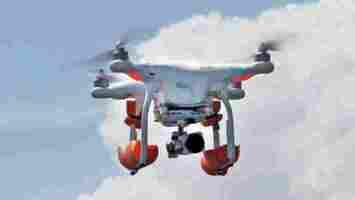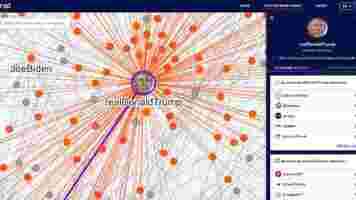Anti-trashbug AI scours sky-snaps to spot sea plastic
Scientists from the University of Barcelona have developed an AI app called Marlit that detects floating marine litter in aerial photos.

The system could help clean up the 8 million tons of plastic trash that enter our oceans every year, harming marine species, human health, tourism, and the climate.
The litter is typically assessed by direct observations from boats and planes. But the vast ocean areas and volumes of data make it hard for researchers to accurately monitor the impact.
Marlit reduces the workload by applying AI to images of the seas. In tests, the system automatically spotted and quantified floating plastics with a reliability of over 80%.
“Automatic aerial photography techniques combined with analytical algorithms are more efficient protocols for the control and study of this kind of pollutants,” said study first author Odei Garcia-Garin.
The system is powered by a deep learning approach that uses convolutional neural networks (CNNs) capable of learning from unstructured or unlabelled data.
The models were trained on over 3,700 images of the Mediterranean coast in Catalonia taken by drones and aircraft. Half of the photos contained floating marine macro-litter (FMML), while the other half were litter-free.
The researchers then used an R package called Shiny to convert the system into the Marlin app.


Marlit analyzes individual images and divides them into sections that enable the identification of floating litter in each area.
It also uses the height and resolution from the images’ metadata to estimate the trash’s density.
The researchers hope to adapt Marlit into a remote sensor on a drone that can automatically detect plastic litter from the sky.
The proof-of-concept web app is now available to all professionals studying the detection and quantification of FMML with aerial images.
It joins a growing range of efforts to spot plastic pollution with AI .
The systems have the potential to continuously monitor marine environments, and ultimately make our oceans a cleaner place for all.
You can read the Marlit study paper in the journal Environmental Pollution .
Explore the Twitter interactions of US politicians with this social network tool
Mozilla and the SMAT (Social Media Analysis Toolkit) team have produced a free interactive network map showing the Twitter connections of US politicians.

The live graph depicts who the likes of President Trump and Joe Biden are interacting with in the build-up to the 2020 presidential election. It’s designed to expose the networks of influence that can adversely affect elections and offer insights into communities, sectarianism, and suspicious influences.
The tool’s creators selected the seed politicians from Twitter lists compiled by C-SPAN (Cable-Satellite Public Affairs Network). They then added the accounts to the graph as circular nodes.
You can click on an individual node or search for a Twitter account to explore that user’s connections. Their interactions are divided between outbound activity showing the accounts they’ve mentioned and replied to, and inbound activity displaying the users who have replied to and mentioned them.
You can also share any interesting findings with each user and their connections via a direct link.


The graph’s developers gave an example of what it can unearth:
You can try the tool out for yourself at this link .
Amazon is asking drivers to sign a ‘biometric consent’ form — or lose their jobs
Amazon is about to take employee monitoring to a whole ‘nother level of dystopian surveillance.

The retail giant will this week ask delivery drivers in the US to sign a “biometric consent” form or lose their jobs, Vice reports .
The form permits the company to use AI-powered cameras in its vans to monitor drivers’ locations, movements, and biometric data.
The firm has already started rolling out the system, made by tech company Netradyne, across its fleet of vehicles. The cameras can monitor a driver’s body movements, infer when they’re distracted, and even spot when they yawn.
Amazon says the system will keep drivers safe on the road, but privacy advocates have called it “the largest expansion of corporate surveillance in human history.”
The consent form says Amazon may use drivers’ photos to create, store, and use biometric information. It adds that the system “tracks vehicle location and movement… as a condition of delivery packages for Amazon, you consent to the use of technology.”
Vice reports that some drivers are refusing to sign the forms. But Ray Walsh, a digital privacy expert at ProPrivacy , said many of them will have little choice but to accept the terms:
Those that do sign the forms will consent to highly-intrusive surveillance that could affect their behavior while they work.
Walsh added that any mistakes picked up by the system could be used to prosecute drivers:
Update (11:45AM CET, March 25, 2021): Amazon spokesperson Deborah Bass gave TNW the following statement:
Greetings Humanoids! Did you know we have a newsletter all about AI? You can subscribe to it right here .